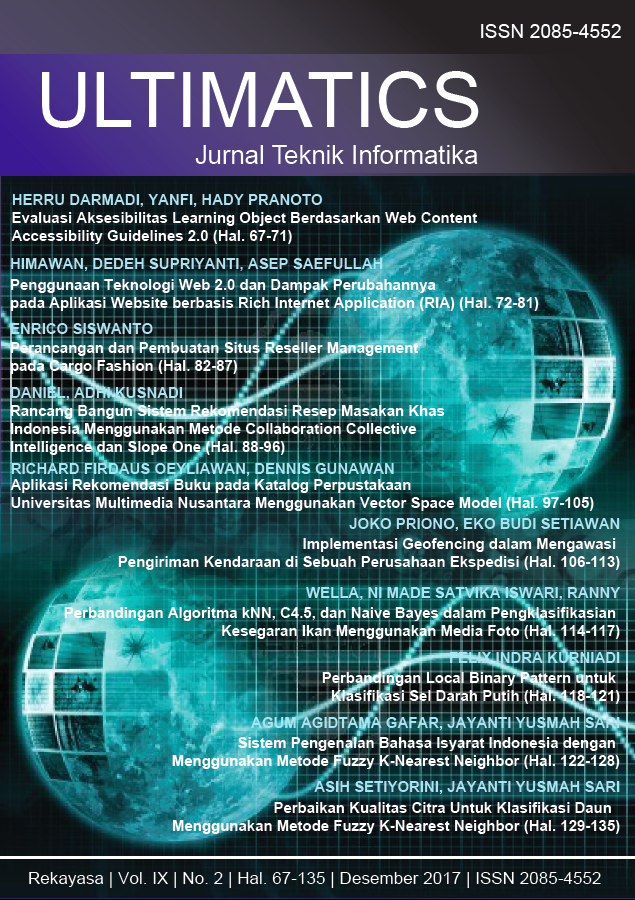Sistem Pengenalan Bahasa Isyarat Indonesia dengan Menggunakan Metode Fuzzy K-Nearest Neighbor
DOI:
https://doi.org/10.31937/ti.v9i2.671Abstract
The Indonesian Natural Sign System (SIBI) is one of the most natural languages of communication, especially for deaf and speech impaired. Deaf and speech impaired can understand and communicate with each other by using sign language, but some normal people will have difficulty understanding sign language with deaf and speech impunity to say. To overcome these problems need develop a system that is able to recognize the Indonesian Sign System (SIBI) which is expected capable of learning media in communicating between the deaf and normal humans. The introduction of the Indonesian Sign System (SIBI) will consists of three main stages: image acquisition, preprocessing and recognition. In this research the classification method used is Fuzzy KNearest Neighbor (FKNN) method. Based on the results of experiments conducted with the classification using the method Fuzzy K-Nearest Neighbor (FKNN) obtained an accuracy of 88%.
Index Term” Fuzzy K-Nearest Neighbor, Sistem Isyarat Bahasa Indonesia (SIBI).
Downloads
Downloads
Published
How to Cite
Issue
Section
License
Authors retain copyright and grant the journal right of first publication with the work simultaneously licensed under a Creative Commons Attribution-ShareAlike International License (CC-BY-SA 4.0) that allows others to share the work with an acknowledgement of the work's authorship and initial publication in this journal.
Authors are able to enter into separate, additional contractual arrangements for the non-exclusive distribution of the journal's published version of the work (e.g., post it to an institutional repository or publish it in a book), with an acknowledgement of its initial publication in this journal.
Copyright without Restrictions
The journal allows the author(s) to hold the copyright without restrictions and will retain publishing rights without restrictions.
The submitted papers are assumed to contain no proprietary material unprotected by patent or patent application; responsibility for technical content and for protection of proprietary material rests solely with the author(s) and their organizations and is not the responsibility of the ULTIMATICS or its Editorial Staff. The main (first/corresponding) author is responsible for ensuring that the article has been seen and approved by all the other authors. It is the responsibility of the author to obtain all necessary copyright release permissions for the use of any copyrighted materials in the manuscript prior to the submission.















